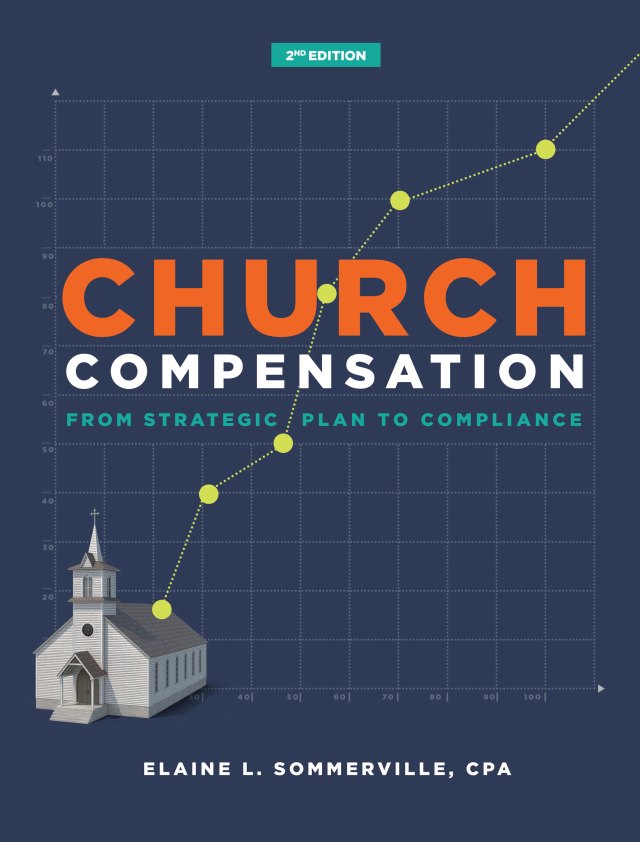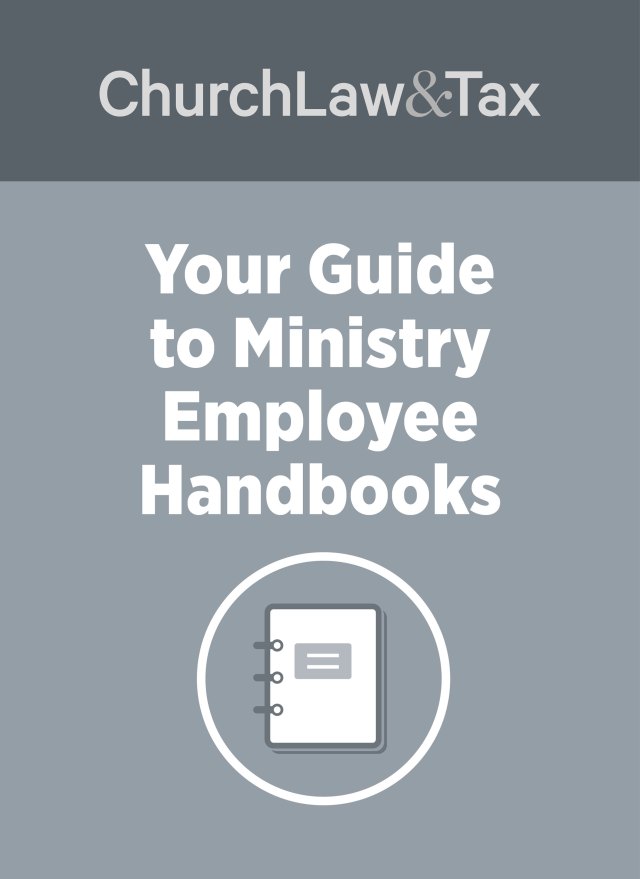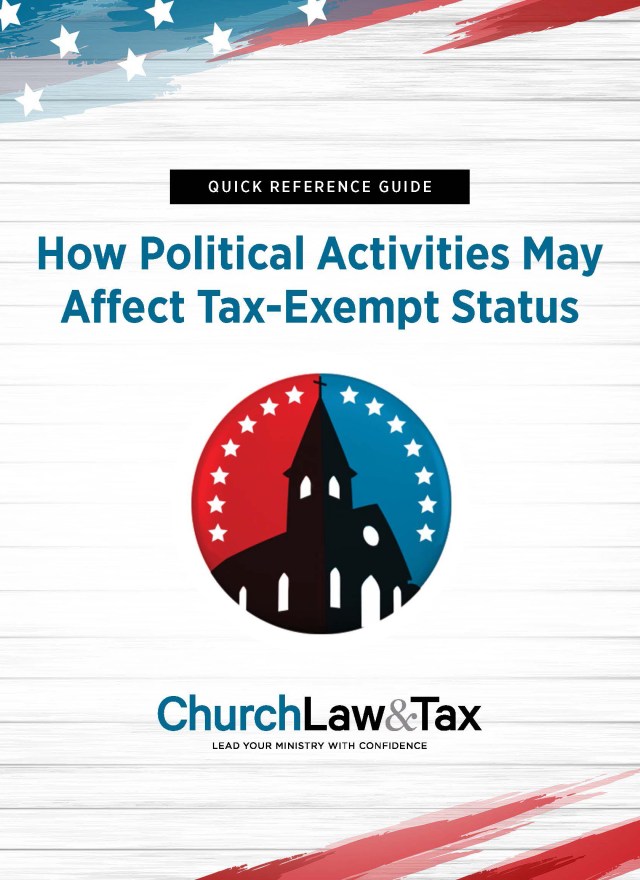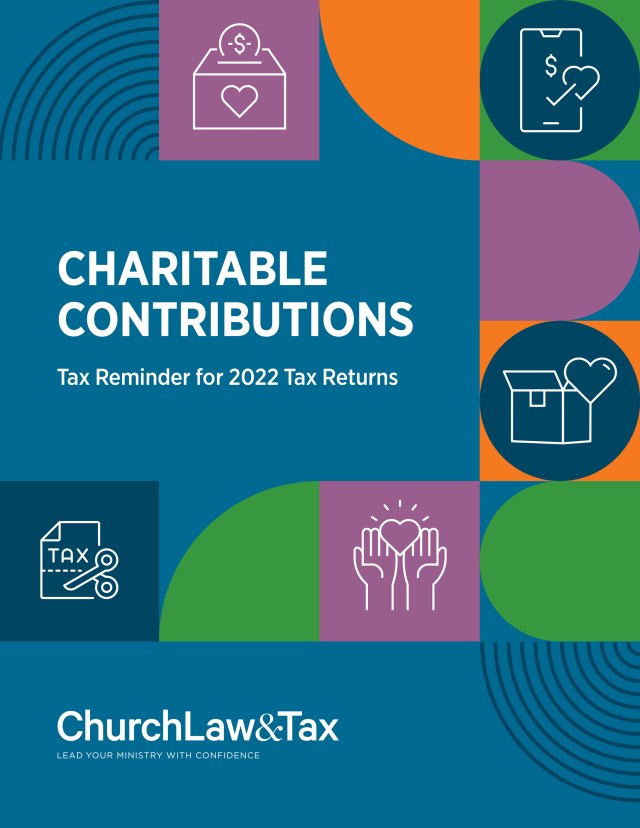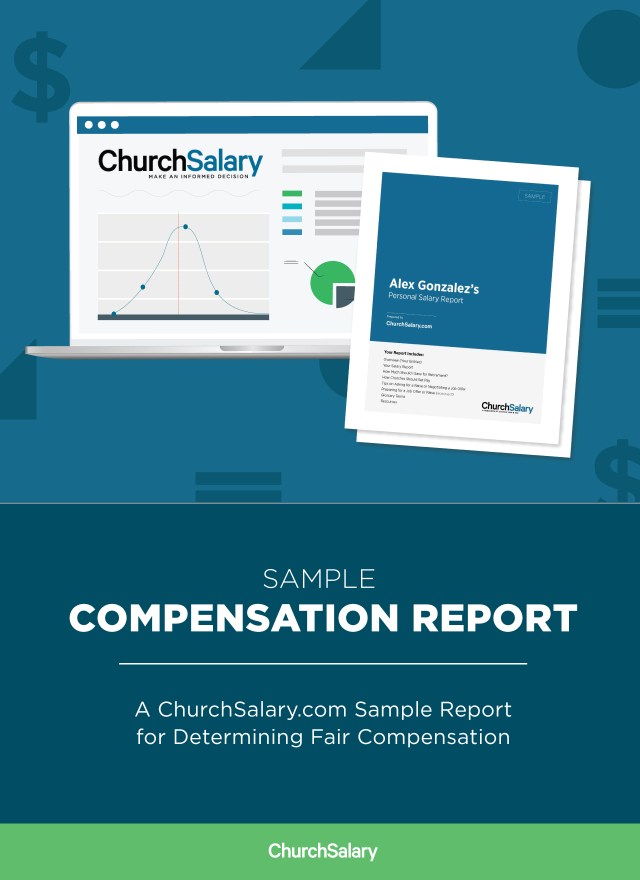While an often neglected tool, well-crafted job descriptions support the church’s mission, enhance ministry effectiveness and the effectiveness of those who do ministry, assist in legal and tax compliance areas, and so much more. Besides summarizing essential job responsibilities, the type of work performed, qualifications, and skills for a position, good job descriptions may include information about the church’s culture, mission, and benefits. In fact, a well-crafted job description functions a lot like DNA.
When God created the human race, he wrote detailed instructions into the body through DNA. DNA instructs each cell as it is formed about how it should function. Those instructions organize the formation, growth, and function of the body. These instructions tell one cell to form a fingernail while directing another cell to become a bone. A functioning human is created when all cells are working together by following the correct instructions.
The Bible describes the church as the Body of Christ, a “body” of individuals working together to accomplish God’s purposes. Just as God provided instructions in human DNA, job descriptions provide instructions to the Body of Christ.
In writing to the Corinthians, Paul desired the church to understand that it would take people with diverse gifts and talents organized well to perform different jobs accomplishing God’s purposes. He used the human body to illustrate how to organize a church, even naming a few distinct parts (1 Cor. 12:12-31).
Paul was addressing a church in Corinth that included people from all over the world (different races and cultures) and those with different occupations and economic statuses. This diverse group had never worked together for a common purpose. Yet Paul knew that if the church could work together like a human body, it could accomplish God’s purposes in Corinth.
Today’s church is no different. If the church hopes to accomplish God’s purposes, its members and staff must work together as one body. Job descriptions can be viewed as the DNA or the set of instructions guiding the church to accomplish God’s purposes through the church’s diverse staff and volunteers.
In Part 2 of my series on church employment, I will describe how job descriptions fit into church management, the benefits of using them, what they should contain, and the strategies to follow for effective implementation. There are few legal requirements for job descriptions, but following best practices to create and use job descriptions can help avoid legal problems.
Vital Instructions for both staff and volunteers
Job descriptions are not just for staff. Volunteers represent the most significant workforce at many churches. Yet, most churches expect their volunteers to function without written instructions. This assumption reduces the effectiveness of the volunteers and increases the time church leaders spend managing them.
Written instructions are necessary to determine how staff members and volunteers fulfill their God-given roles in the local body of believers. Job descriptions describe their roles, responsibilities, and duties. Without these instructions, employees and volunteers may have little guidance about what they do and how they do it.
Without explicit instructions, it is easy for chaos to occur, potentially reducing the effectiveness of the local church. Job descriptions help bring order out of the chaos.
Human resource professionals agree that job descriptions are essential. They provide the roadmap for accomplishing a church’s mission. They also provide an effective tool for communicating expectations and responsibilities. The importance of this tool is why drafting job descriptions deserve church leaders’ time and attention.
Ten benefits of well-written job descriptions
There are many benefits of a well-crafted job description. Here are ten.
1. Defines the role
If everyone knows their role and works at accomplishing that role, the church will be more effective. This key element is also why drafting job descriptions cannot be delegated solely to an administrator or human resources department within a church. Pastors and senior leaders need to help shape the job descriptions, listing the gifts, skills, and talents needed to perform the job and the church’s expectations for the job.
Tip. Church leaders should be honest about the gifts and talents needed to accomplish a specific task and strive to match those requirements to the gifts and talents of staff and volunteers. The goal is for each worker to do what they do best.
For an example of how a person’s gifting and abilities are used in a job description, see the sample job description accompanying this article.
2. Avoids hiring mistakes
Many church leaders face situations where someone wants to be hired for a position because they need a job, regardless of their qualifications. Screening each candidate based on minimum job qualifications listed in a job description helps ensure that an unqualified person—including a friend or relative—is not hired.
If the church has a written job description and is disciplined enough to hire only qualified persons, hiring disasters can be avoided. A solid job description allows a church to honestly convey care to unqualified applicants while communicating their inadequacies for the job at hand.
3. Assists with legal and tax compliance
Since the 1930s, federal, state, and local governments have enacted hundreds of laws that govern the relationship between employers and employees. No church can comply with all these laws on an ad hoc basis.
Failure to comply with employment laws may draw the unwanted attention of regulatory authorities, cost a church hundreds of thousands of dollars, bring unwanted publicity, cause members’ wrath, and jeopardize careers.
Job descriptions provide guardrails against serious law violations in making employment decisions. Compliance requires structure and discipline. Job descriptions can provide structure and give church leaders a tool to develop self-discipline in making employment decisions that avoid legal entanglements.
Legal entanglements can arise from a regulatory investigation or an employee lawsuit. For example, if done correctly, a job description can help avoid employee claims against the church for unpaid overtime.
4. Reinforces good compensation practices
Job descriptions may improve compliance by including compensation information for paid employees. They establish the facts to support a reasonable range of compensation for a position.
Including compensation data in job descriptions helps enforce good compensation practices. It forces the church to adopt a compensation philosophy to guide compensation decisions and encourages the church to research compensation for comparable positions in the market. This information allows the personnel and finance committees to make informed decisions when setting the budget and approving a reasonable range for each position.
Tip. See the sample job description for an example of how compensation information can be handled.

Some churches consider compensation private and confidential to each employee and will reject this suggestion. Many churches wrongfully tell employees not to discuss their compensation with other employees. In today’s world of “transparency,” employees are growing more accustomed to compensation information that is public and readily shared among employees. For additional insights, see “Compensation” in the next section.
Caution. The United States Department of Labor suggests that some employers utilize compensation privacy policies to hide unlawful discrimination and strongly discourages this practice.
5. Guides employment decisions
Church leaders should review an employee’s job description before making any critical personnel decisions. That is, leaders should make decisions consistent with the job description. The review process can help a church leader make more objective personnel decisions.
Consider these two specific benefits of a well-crafted job description:
- Provides sound guidance when making decisions about hiring, firing, promotions, or employee transfers to other departments—or moving a volunteer from one area of service to another.
- Provides the structure needed when creating, combining, or eliminating positions.
6. Provides a performance tool
Job descriptions set the baseline for the minimum performance expected for the position. Employee reviews should be structured around it, making the review more straightforward and more consistent.
The reviewer should go through the job description and compare the worker’s performance against each item listed as a job duty. The reviewer can document whether the employee’s performance equals or exceeds the church’s expectations for each task. If a worker fails to improve after receiving notices of performance deficiencies, it is easier to justify firing the individual.
Caution. For a job description to be a helpful measurement tool, the duties and responsibilities listed should be measurable and contain specific behavior objectives.
7. Assists with communication
Job descriptions make great communication tools. When a job description is clear about how to do tasks and responsibilities correctly, the church can often avoid unmet expectations between the worker and the church.
Job descriptions can also inform other staff members of the duties of each position and clarify responsibilities among all team members.
Tip. Make the title and role components of a job description available to both staff and volunteers that regularly interact with each other and need to know one another’s duties and responsibilities.
Regarding candidates for a position, a job description communicates the minimum qualifications and significant duties and responsibilities. It also acts like a brochure touting the benefits of working at the church while informing the candidates about the church’s work culture.
8. Helps track changes
Some HR and church leaders view job descriptions as static. But nothing could be further from the truth. In 2020, the COVID-19 pandemic demonstrated why job descriptions must be fluid to allow the church to accomplish its goals. Accomplishing ministry objectives during the pandemic required forging new paths. The objectives did not change, but the methods changed. Job descriptions had to be changed to reflect new expectations and new skill requirements.
Example. The 2020 pandemic created needs for churches that previously did not exist—or did not rise to a high level of priority. But the virus, and the government-related restrictions caused by it, suddenly created the need for employees with social media and online streaming skills, for instance. Few churches included such skills in job descriptions, though. Reviews and updates to those job descriptions, in light of those changing realities, became crucial for churches as they sought to meet the needs of their congregations and communities during the pandemic. Similarly, regular reviews and updates can provide similar positive changes for churches.
While 2020 brought monumental changes, it wasn’t an anomaly. Changes frequently happen in the church world. Church leaders should review job descriptions with the workers at least annually and possibly more frequently.
Employees should initiate changes to their job descriptions when supervisors instruct them to perform a task outside their listed duties. This accountability helps supervisors stay within their responsibilities. It also provides employees with an avenue of appeal if they object to the new responsibilities.
9. Provides a discipleship tool
Church leaders rarely recognize the spiritual value of job descriptions. Yet, they can play an essential role in the spiritual development of the staff.
Job descriptions can help the worker understand the importance of their spiritual walk and how their spiritual walk may affect how they accomplish their job. Job descriptions may include the level of spiritual maturity expected from the worker and also detail the spiritual growth expected from the employees.
Tip. Job descriptions should explain how this position assists the church in accomplishing its mission.
Caution. For employees who fall under the ministerial exception, job descriptions must list the position’s spiritual duties and responsibilities, the spiritual qualifications, the religious training needed (both past and ongoing), and the spiritual performance expected of them. If the position requires a person to have ministerial credentials, then this should also be included.
For a full discussion of when employees qualify for the ministerial exception, how to properly apply the exception to church employees, and how to create job descriptions demonstrating the ministerial exception’s applicability to those employees, see Part 1 of this series, as well as the accompanying PDF.
10. Attracts more qualified candidates
Job descriptions should help attract qualified candidates by listing clear expectations for the position and the pay scale for the position. Listing or referencing the potential fringe benefits may also attract qualified candidates (see below). Many candidates make their employment decisions based on the fringe benefits as much as the cash compensation arrangements.
Composition of a job description
This section lists potential components of a job description. Not all job descriptions include everything discussed in this section. Church leaders should make a thoughtful decision about each item, including the justification for why it is included or excluded.
Job title
The title communicates the role the position plays in the church. If the position involves spiritual duties and responsibilities, the title should reflect the position’s spiritual nature. Except for positions where the title signifies religious duties, the title should avoid internal religious terminology that may have little relevance outside of the church.
For additional insights on job titles that reflect spiritual responsibilities, see Part 1 of this series on the ministerial exception.
Job summary
A job summary should contain a short description of the position and a brief description of the church, its mission, culture, and work environment. By communicating how this position helps the church accomplish its mission, this component can help convince candidates that this is a great place to work.
Minimum qualifications
Minimum qualifications should be detailed for three categories.
First, the education or training expected from candidates should be detailed.
Second, relevant experience required for the job should be described. The description should include the specific type and length of experience the church believes will prepare an individual for this position.
Third, the job description should include both hard and soft skills. For example, the administrative assistant to the pastor must be proficient in Microsoft Office, a hard skill. But the position must also have a well-developed ability to protect the pastor from unnecessary interruptions in a diplomatic manner, which is a soft skill.
The minimum qualifications component for ministerial exception positions will detail the candidate’s religious educational requirements and religious practices.
Sometimes, mandatory qualifications may include any religious qualifications for certain positions. For example, the church may require that candidates be professing Christians and members of the employing church.
Responsibilities and duties
Detailing responsibilities and duties is the substance of the job description. It should concretely describe specific tasks to be accomplished by the position. For example, consider this possible task for a donor accounting clerk: “A donor accounting clerk is expected to enter all donations into the church management and accounting software.”
Refer to the sample job description for other specific examples of responsibilities and duties.
Physical requirements
Job descriptions should indicate the physical duties required of the position. For example, the facilities person might have to lift at least 20 pounds and carry it more than 50 feet, or a clerical position might require the worker to sit for an extended period. By listing the physical requirements, job candidates become aware of the church’s expectations in this area.
This component helps the church comply with the federal Americans with Disabilities Act in two ways.
First, it sets the minimum essential physical requirements for the position. If a disabled person cannot perform the minimum essential physical requirements, even with accommodations, the church may avoid hiring that person for that position.
Second, it places applicants or employees with disabilities on notice that they must affirmatively inform the church of their limitations. The applicant or employee’s notice to the church places the responsibility on the church to discuss with the candidate or employee the potential ways the church can reasonably accommodate the applicant or employee’s disabilities in that position.
Lines of authority
This component of a job description places the position within the hierarchy of the church. It should describe the department, its role in the church, and how it interacts with other church departments.
This component also must detail who supervises this position and name any positions that report to this position, whether paid or unpaid.
This component may also include the number of workers in the department to assist the worker in understanding the size of their team.
Classification
Classification for employment law and payroll tax purposes should be stated in a job description. This component will include whether this position is classified as a ministerial exception position, exempt from overtime, or nonexempt from overtime for wages and hour rules. It should also designate if the position requires the worker to be classified as a minister for federal payroll tax purposes.
Additional help. Find detailed guidance for properly classifying workers in chapters 4 and 5 of Church Compensation, Second Edition: From Strategic Plan to Compliance by CPA Elaine Sommerville.
Compensation
Including a pay scale is critical to attracting qualified candidates, avoiding unlawful employment decisions, and fostering an atmosphere of transparency and fairness among employees.
This disclosure means that the church must review the pay scale at least annually to assure fairness to both the church and the employee.
As noted above, including compensation information in job descriptions helps enforce good compensation practices, including initial and ongoing research regarding pay rates for comparable positions inside and outside of churches. For an example, see the sample job description.
A brief statement about the church’s fringe benefit plans may also be helpful as a part of this component. Note, for example, the sample job description contains this sentence about benefits: “This position is eligible for generous fringe benefits as described in the Employee Handbook.”
Tip. ChurchSalary, a sister site of Church Law & Tax, provides reliable market data, customized reports (including localized salary recommendations), and more for churches.
Conditions
Besides the formal requirements of a specific job, many churches have specific conditions that candidates and workers must meet to be employed.
For example, any job offer for positions working with children is conditioned on receiving an acceptable criminal background report. Finance department positions frequently require an excellent credit report. Sometimes the church’s offer of employment is conditioned on a negative drug test.
Some churches require all workers to agree with their statement of faith as a condition of applying for a position and continued employment.
Most churches have adopted a code of conduct that applies to all workers. Where allowed by law, the church may discipline workers for infractions of the conduct code unrelated to their work activities. For example, the code of conduct requires that employees not use illegal drugs. Violation of this requirement allows the church to impose discipline on an employee convicted of possession of an illegal substance.
If the church places conditions on applicants and workers, it should ask an employment attorney to review those conditions for compliance with applicable employment laws.
Implementing job descriptions
Church leaders reading this article may become overwhelmed by the work needed to implement job descriptions. This feeling can cause “leadership paralysis” because leaders cannot imagine drafting all of the job descriptions needed for both staff and volunteers in their churches.
This leadership paralysis reminds me of a question posed during my graduate business program: How does one eat an elephant? Answer: One bite at a time. Church leaders can overcome this paralysis by breaking the enormous task of drafting job descriptions into bite-sized tasks.
Here are some suggested steps to consider as you create your plan of action:
- Delegate the task to a group or committee. Larger churches often include HR professionals willing to assist. In smaller churches, the board members can assist in the task. If your church has a personnel committee, its members should be active in drafting, editing, and approving job descriptions. I also suggest recruiting church members who’ve developed job descriptions to assist with the task.
- Start with a small department with no more than five employees and/or volunteers.
- Get input from the people who know. Along with senior leadership and department supervisors, employees in the department can provide essential information about their current job duties and responsibilities.
- Set a deadline for completing the first draft for the first group of job descriptions, such as 30 days. Set a deadline for the second draft, maybe 15 days.
- Set a deadline (maybe between 15 and 30 days after the second draft) to finalize the job descriptions for the department.
- After meeting the above deadlines, select another department. Repeat the process until all paid employees and volunteers have job descriptions.
In my experience, church leaders should plan to complete the entire process in two to three years at most, depending on the church’s size. In this way, leaders can “eat the whole elephant.” This task is too important to delay implementation because of leadership paralysis.
Moving forward as a well-functioning body
Time spent developing and maintaining job descriptions pays enormous dividends, both in time management and spiritual development, and helps ensure compliance with tax and labor laws.
Most importantly, placing job descriptions into their proper role in church management is critical when it comes to accomplishing a church’s mission effectively.
So, instead of suffering through the confusion and resulting chaos, senior leaders can concentrate on moving the church forward in accomplishing God’s purposes as it functions as a well-coordinated body with each part understanding his or her role in accomplishing the church’s kingdom purposes.
The author thanks Rev. Jay Fleener and CPA Elaine Sommerville for their useful comments and edits to this article.
Return to series home page.

